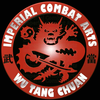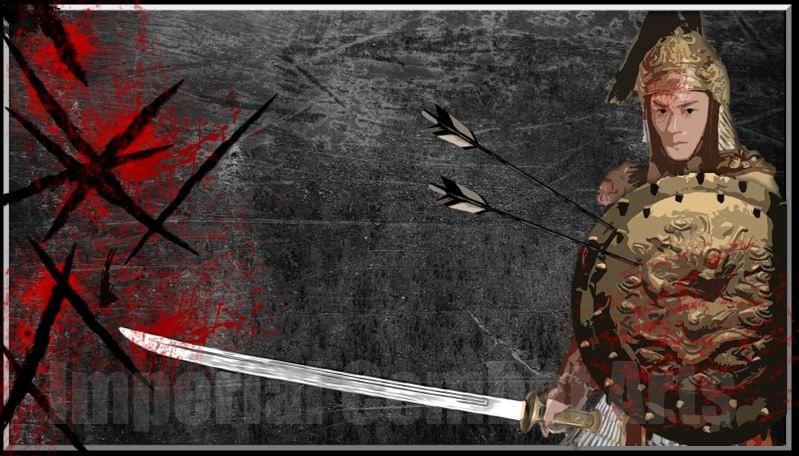SABERS & BROADSWORDS
TAO - DAO - DOU
刀
|
Tao Sword training is an advanced weapon study taught at Imperial Combat Arts in Denver CO. The Tao (Dao, Dou, 刀), is a category of single edged swords that includes Sabers, Broad-swords, Scimitars, and Knives. These legendary Chinese swords have evolved over the centuries to become some of the most well known and well studied swords in human history, as well as the primary swords trained in several of our martial arts. The number of Tao's taught at Imperial Combat Arts can seem overwhelming, but in reality many of these blades are very similar in training.
|
Chinese Swordsmanship at a historically accurate combat level is a very different study than the theatrical and acrobatic sword training seen in many modern Chinese martial arts schools. Our combat level sword training has direct lineage to the battlefield, and can hold its own with, or surpass any other weapon system in the world, and blends seamlessly with our hand to hand, ground systems, and chin na, as a complete study.
WILLOW LEAF SABER
|
SHORT SABER
|
LONG SABER
|
GREAT SABER
|
BALL SABER
|
SLICING SABER
|
GOOSE WING SABER
|
GOOSE FEATHER SABER
|
BUTTERFLY SWORDS
|
SPLIT WIND SABER
|
DOUBLE SABER
|
DOUBLE SHORT SABERS
|
SPROUT SABER
|
HORSE BEHEADING SABER
|
STRAIGHT BACKED SABER
|
OXTAIL SABER
|
TAI CHI SABER
|
PAKUA SABER
|
EIGHT RING BROADSWORD
|
SHARK HEAD SABER
|
DEMON HEAD SABER
|
CLOUD HEAD SABER
|
ASSAULT SWORD
|
CICADA WING SWORD
|
QILIN HORN SWORD
|
ELBOW SWORDS
|
VANGUARD SWORD
|
MACHETE
|
COMBAT KNIFE
The combat knife is the smallest of the Tao's and essentially a miniature saber. Combat Knife has been taught in our schools since the 1960's. by C. E. Smith an Airborne Ranger / Army Ranger Green Beret Officer, as well as Grandmaster Long who taught combat knife to U.S. servicemen during the Vietnam War. Students begin training Combat Knife day one, before other bladed weapons.
|
THROWING KNIVESHand-thrown and projectile blades are a traditional part of Chinese Weapon study. While some of these weapons had direct military applications, most are specialty weapons that were designed to deliver poisons, or were used to surprise and soften targets upon approach with a primary weapon. These thrown weapons include Knives, Axes, Spears, Needles Thorns, and Darts. Enter Page> Throwing Weapons
|
SPECIALTY KNIVESThere are several Specialty Knives and Hand Axe's trained at Imperial Combat Arts. These weapons includes Deer Horn Knives, Mandarin Duck Blades, Wind & Fires Wheels, and Sun and Moon Knives. These unique knives, that are used in pairs, are powerful close quarters weapons that can engage larger weapons. Unlike combat knives these superior weapons have a guard. Enter Page> Specialty Knives
|
GLAIVESGlaives are long and powerful pole-arm weapons that are essentially single-edged swords on a long staff. Also known as sword-staves these weapons have been used the world about for ancient and medieval warfare. The Glaive or Fauchard is a European term for these weapons though there are several types of Chinese Glaives including the Assault Sword and the Reclining Moon Blade. Enter Page> Chinese Glaives
|
TRAINING THE TAO
The Tao is know to the Chinese as "The General of all Weapons" and its training dates back to the Bronze Age. By 280 C.E. these weapons became the primary swords on the Chinese battlefields. Sabers would also become the primary style of sword the world about.
BENEFITS OF TAO TRAINING
Tao training strengthens the grip, wrist, arms, joints, and bones. This strength in turn helps deliver unarmed strikes, the joint conditioning helps to apply and defend against joint locks, the shock of weapons interaction and striking against training dummies, helps to strengthen the bones. Wielding an object such as a Tao trains the body much differently than empty hand training alone. This training prepares the body for armed combat, where survival depends on certain skills, maneuvers, and techniques specific to weapons.
TAO DRILLS
Sword drills are an important part of training sword. These drills teach primary grips, stances, maneuvers, cuts, chops, slashes, blocks, parries, and thrusts, and build these important movements into the body as a second nature reflex. Weapon drills are done in the air, vs partners, dummies, and all types of specialized equipment. The intricate artwork painted on the floor of the school at Imperial Combat Arts is designed for students to drill attacks and defenses against multiple opponents in all 8 directions.
TAO FORMS
Sword forms are one of the primary ways Masters pass on the ancient knowledge of sword-fighting to the next generation of Warriors. These challenging forms teach dynamic flow, maneuvers, sword handling, and numerous proven and effective techniques. Every movement and technique in the sword forms at Imperial Combat Arts relate directly to combat, and are trained dynamically in sets, and matching. Forms are a way to practice your techniques routinely, and turn them to muscle memory, as needed for battle.
TAO SETS
Dynamic sets allow students to learn effective techniques and sword applications that could never be used in sparring. Even with full pads a training sword can cause serious injury or death, therefore mastering sword requires a skilled and dedicated partner with focus and control. This repetitive partner interaction is one of the ways proven techniques are taught. At Imperial Combat Arts weapon sets are done vs multiple opponents, with realistic training weapons, as well as with padded weapons.
TAO TARGETS
|
|
Throughout history target practice has been a crucial part of sword development, as it still is today. In all parts of the world Straw Men, and Wooden Pell's of various types, have been the primary targets used to practice attacks and maneuvers. Imperial Combat Arts indoor/outdoor school has a full array of traditional and modern training dummies, accuracy rings, cutting posts, and dynamically moving targets designed specifically for Saber training, as well as ranged targets for thrown bladed weapons.
|
TAI CHI saber
The Tao is a primary weapon in Tai Chi as well as several other Martial Arts taught at Imperial Combat Arts. After standard training of the Tao and all it's variants is completed, Tai Chi Saber offers a greater refinement of skill and deeper intimacy with the blade. Tai Chi Saber forms taught at Imperial Combat Arts are trained slow and in depth, as well as full speed. Every technique in our forms directly relates to fighting multiple armed opponents, and they are also used dynamically in sets and matching.
SABER MATCHING
Aggressive matching with training swords is an important part of preparing for the chaos and fray of battle. This matching is also done in unusual and compromised ways, such as blindfolded, or on beams and posts. Most all matching done at our school, whether armed or unarmed, is done versus multiple opponents. These intense matching sessions are designed to be painful, yet safe, and push practitioners ever forward in skill. Aggressive Sword matching can only be done safely with padded weapons and armor.
SABER VS OTHER WEAPONS
Aside from sword vs sword, there are numerous traditional sets to teach swords interaction with other weapons. Some of these pairings are legendary such as Saber vs Straight Sword, Tao vs Spear, Tao vs Axe, and unarmed vs sword. Additionally learning how to use short swords vs long swords, and dual wielding, is an important part of melee weapon mastery. These important concepts and lessons transfer directly to empty hand tactics, such as fighting opponents with superior reach.
SECRET SWORD HAND TOUGHENING
There are highly toughened hand and finger weapons developed in the arts that allow Sword Masters to use their extensive sword techniques with their empty hand. This high level hand toughening can take years to master. At the highest level masters of these arts demonstrate breaking boards and holding their entire body weight on the tip of two fingers. With this strength they can launch full force strikes using the same techniques and maneuvers mastered with their sword. Enter Page> Hand Toughening











































